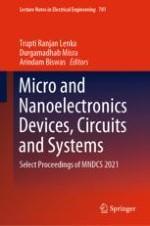2022 | Book
Micro and Nanoelectronics Devices, Circuits and Systems
Select Proceedings of MNDCS 2021
Editors: Dr. Trupti Ranjan Lenka, Prof. Durgamadhab Misra, Prof. Dr. Arindam Biswas
Publisher: Springer Singapore
Book Series : Lecture Notes in Electrical Engineering
